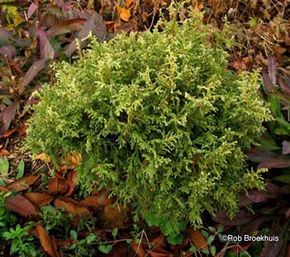The dwarf false cypress is one of a vast selection of dwarf conifers suitable for rock gardens. However, unlike many "dwarf evergreens" that all too quickly become quite large, the growth of the dwarf false cypress is truly slow. It rarely reaches more than 2 feet in height and 6 feet across after 40 years.
Description of dwarf false cypress: The dwarf false cypress is a small, dense-growing conifer, rounded in its youth but becoming flat-topped as it ages. It bears fan-shaped branchlets that are deep green at the tips and blue-green below. Ease of care: Easy.
Advertisement
Growing dwarf false cypress: Although the dwarf false cypress is tolerant of varying conditions, it prefers moister soil than many other rock garden plants. For that reason, it is often planted at the base of the rockery, where it will not be as exposed to drying winds. It does equally well in full sun or partial shade.
Propagating dwarf false cypress: By cuttings.
Uses for dwarf false cypress: Its year-long coloration and slow, regular growth make this plant a star of the dwarf conifer collection. It is often planted where dense permanent cover is wanted, both in rock gardens and in foundation plantings.
Dwarf false cypress related varieties: The varieties of dwarf false cypress include rounded or broadly conical versions, pyramidal types, and low-growing ones. These varieties are generally chosen from sports (side shoots with characteristics different from the main plant) appearing on the following species: Sawara false cypress (Chamaecyparis pisitfera), Hinoki false cypress (C. obtusa), Nootka cypress (C. nootkatensis), and Lawson cypress (C. Lawsoniana). Other than sharing dwarf growth habits, they come in a variety of foliage shades, from deep black-green to blue-green to yellow to variegated. Make sure any varieties selected for the rock garden are true dwarfs and not just slow growing species.
Scientific name of dwarf false cypress: Chamaecyparis pisifera
Advertisement
